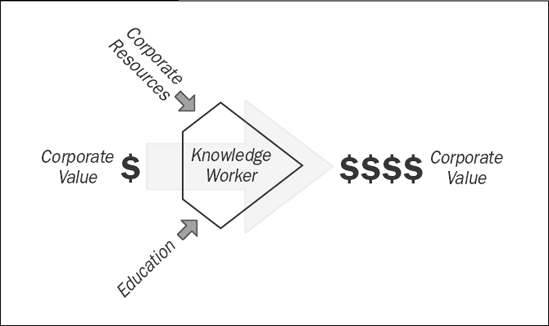3.7. Knowledge Worker Education
In most knowledge organizations, the flow of information isn't limited to contributions from the knowledge worker to the corporation but flows from the corporation to the worker as well. Often this flow of information is through informal osmosis—picking up information and techniques informally through interacting in meetings and working together on projects. Perhaps more important, is the formal transfer of information, in the form of knowledge worker education, which often represents a significant investment of corporate resources. Because of the size of the investment, it's important for management to have a good idea of he likely return on investment (ROI).
One way to estimate likely ROI on Knowledge Worker education is to view each knowledge worker as a value amplifier, converting low- to moderate-value resources into high-value intellectual property, as depicted in Exhibit 3.5. Better knowledge workers offer a higher value multiplier than others; some provide no value gain or even a value loss compared to the invested value. In most case, the value multiplier can be improved through education. However, management has to decide if an investment in education will increase the value multiplier associated with a given knowledge worker sufficiently to warrant that investment.
EXHIBIT 3.4. EXHIBIT 3.5

Part of the challenge in making this determination ...
Get Essentials of Knowledge Management now with the O’Reilly learning platform.
O’Reilly members experience books, live events, courses curated by job role, and more from O’Reilly and nearly 200 top publishers.

